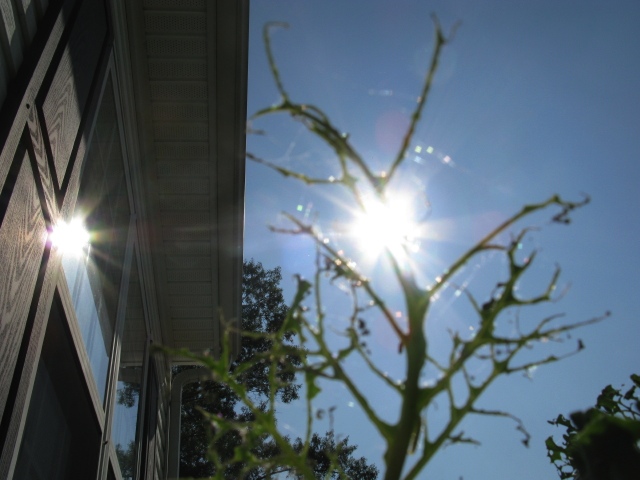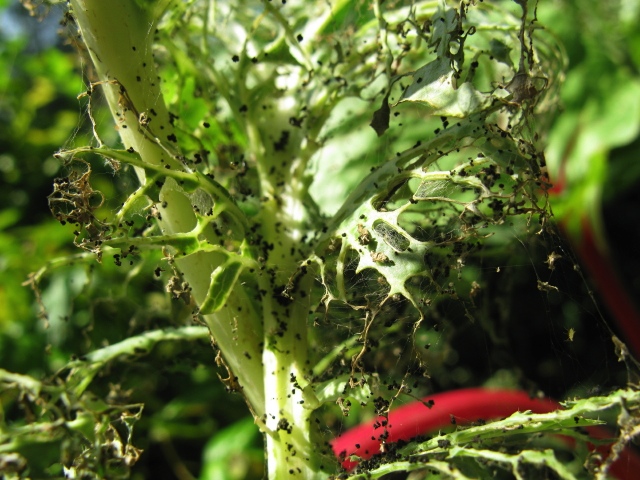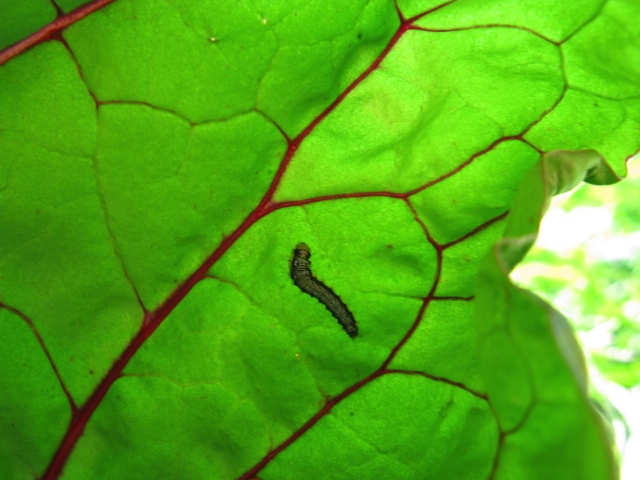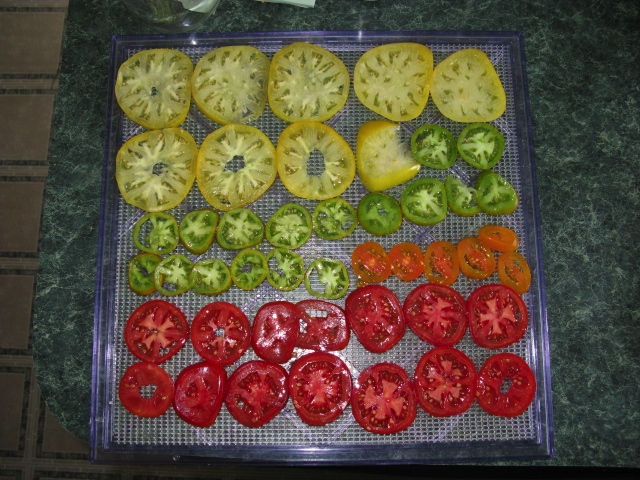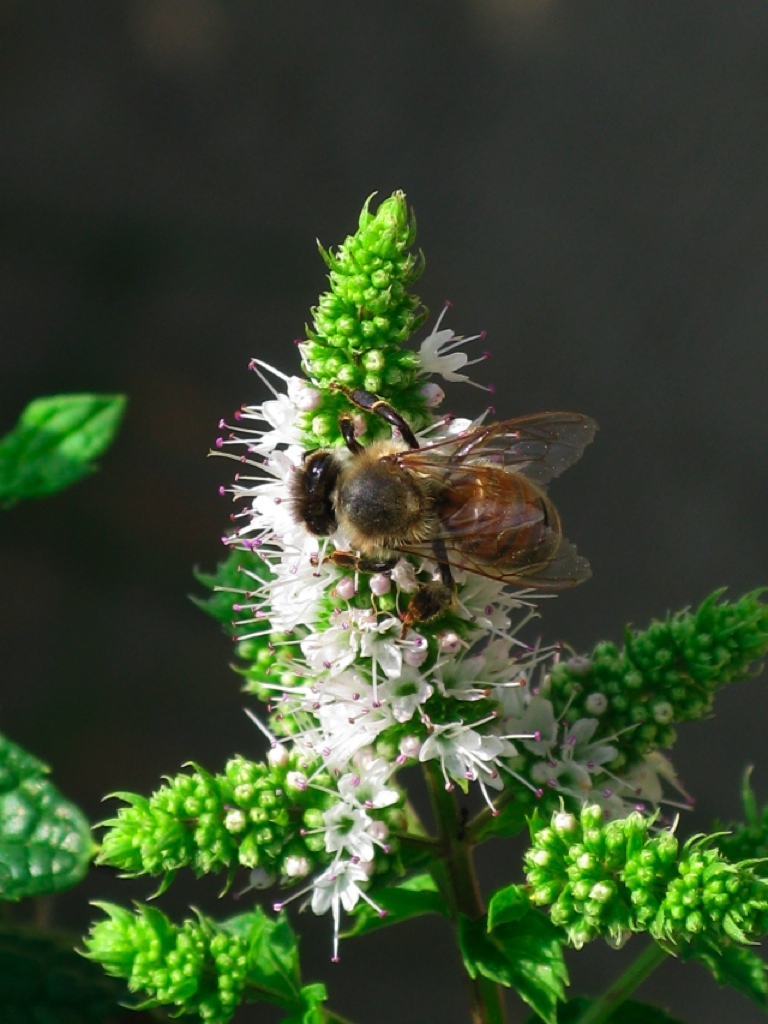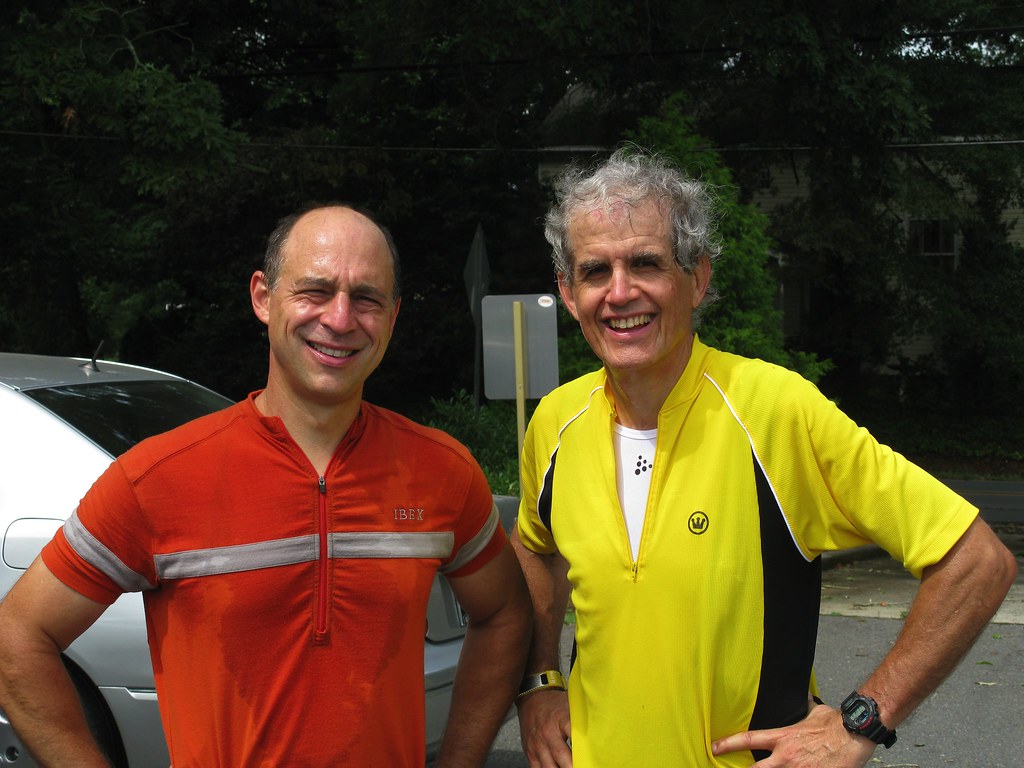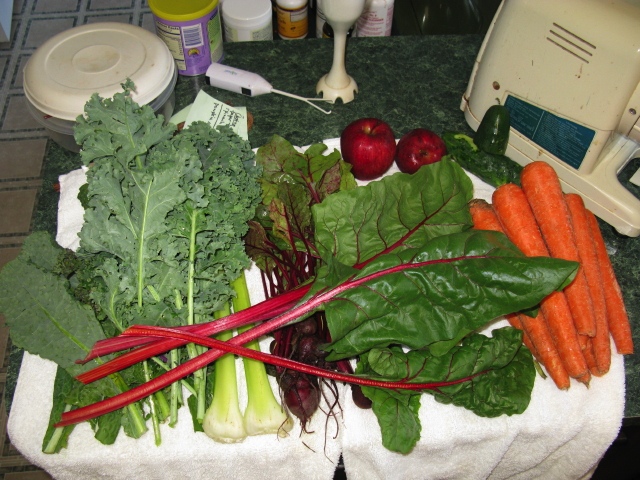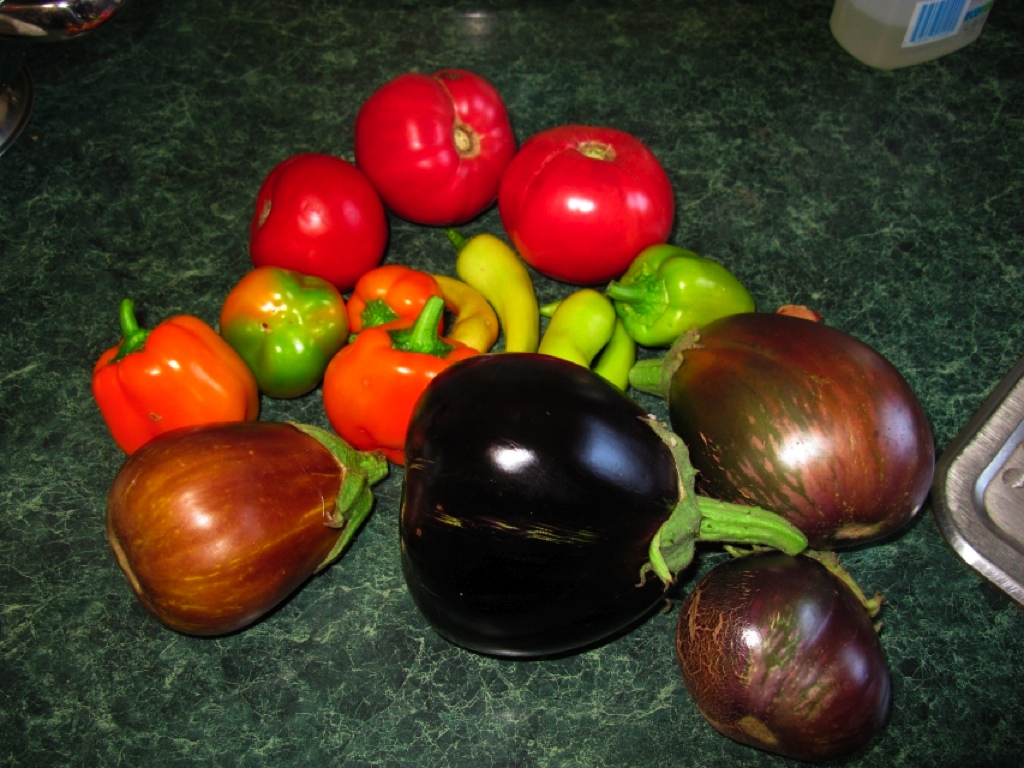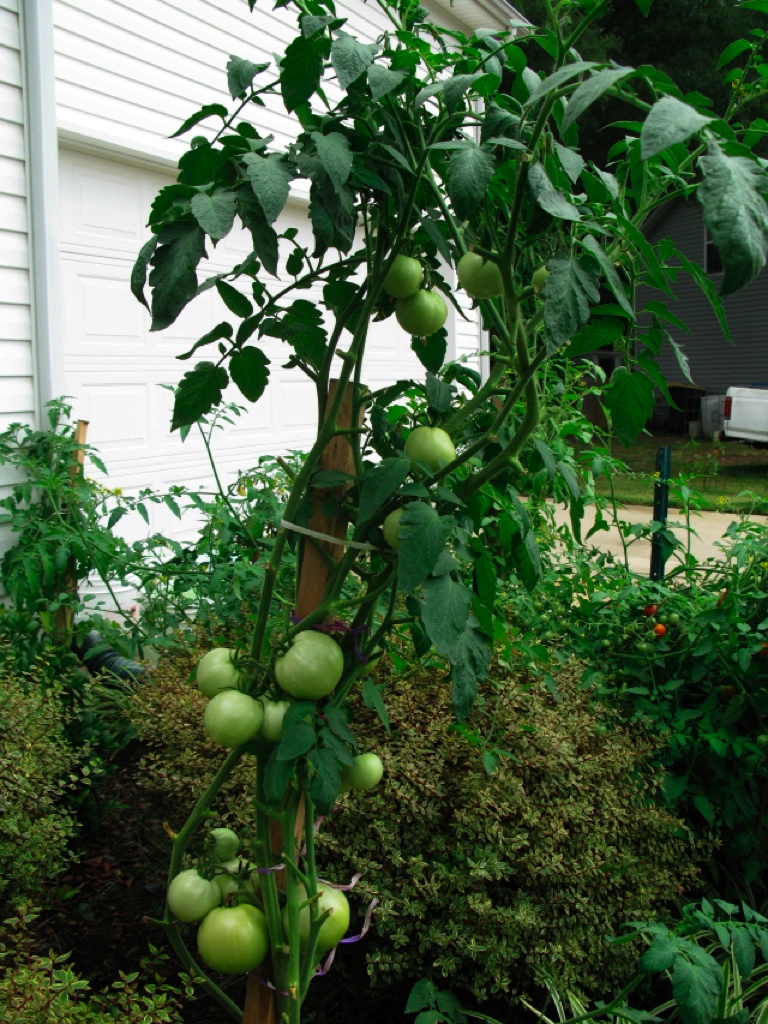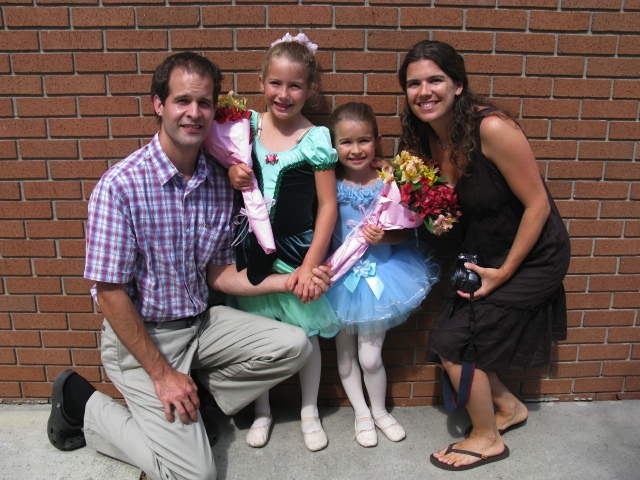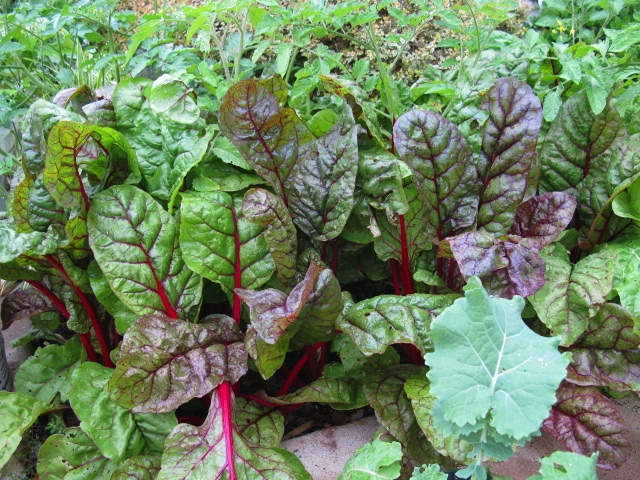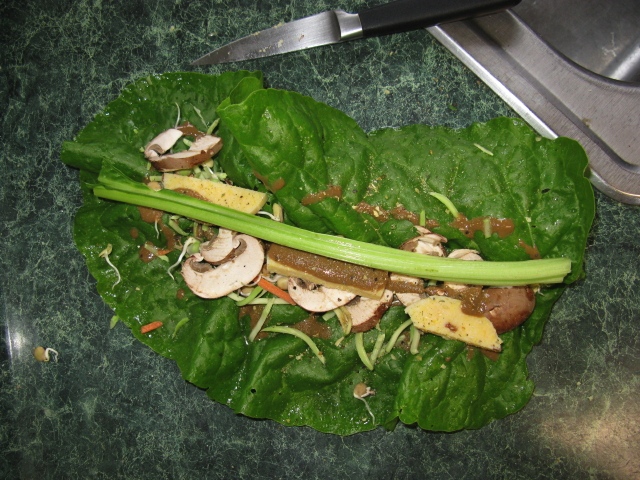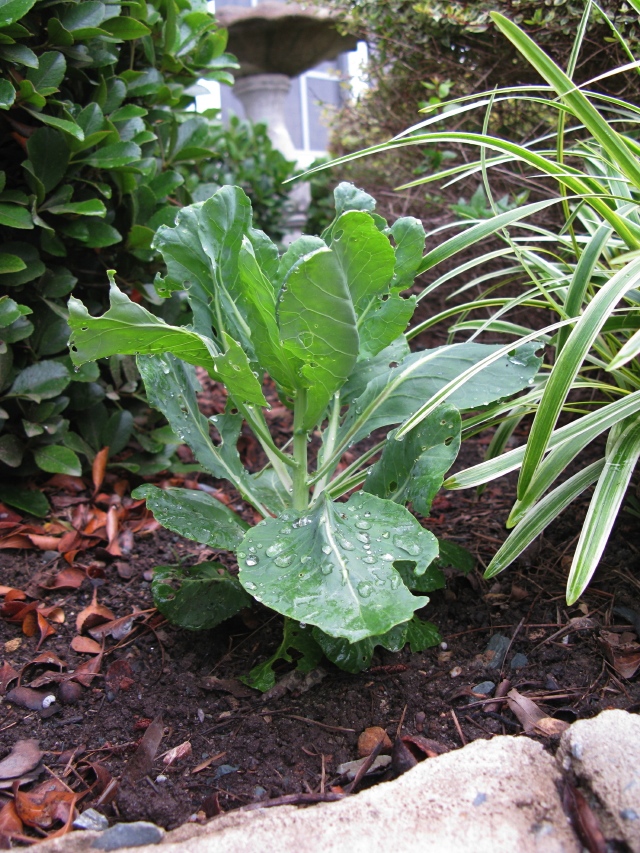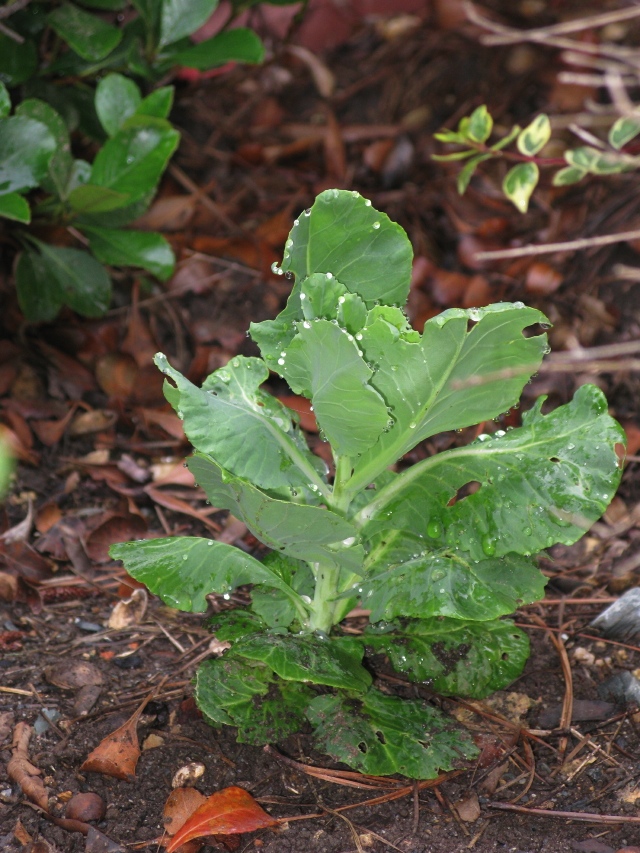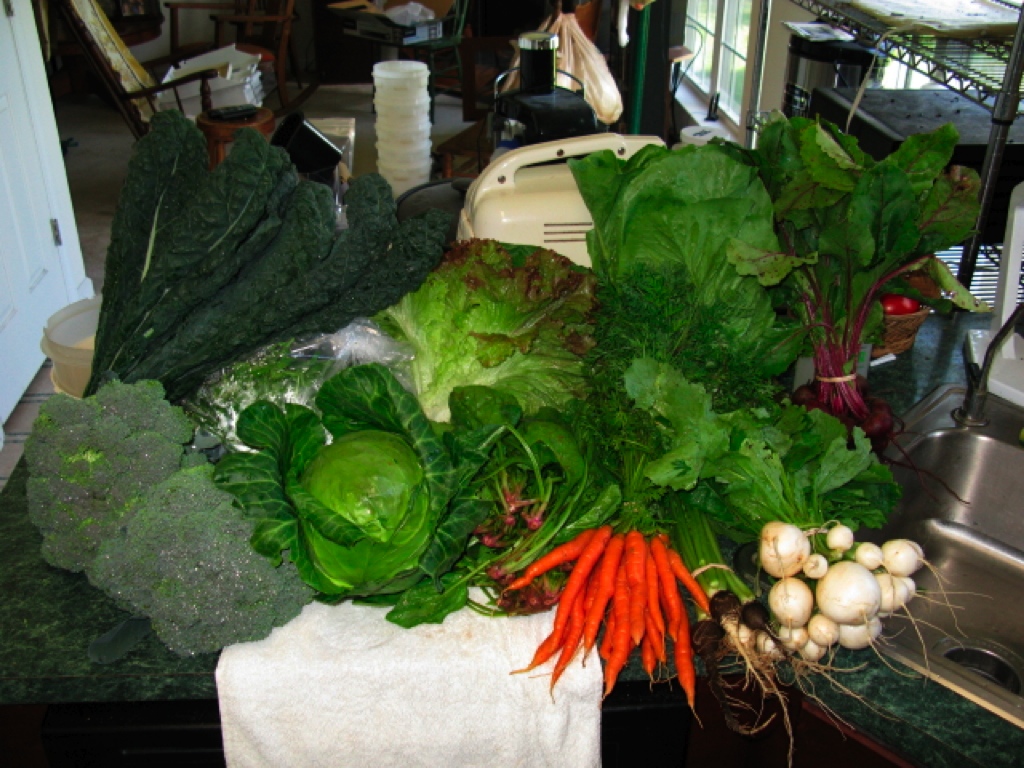As mentioned in an earlier post, the white cabbage butterfly is an annual menace in North American gardens and fields, attacking the Brassica family (broccoli, kale, cabbage, brussels sprouts, turnips, etc.). They appear in spring and can go through several life cycles until overwintering in the fall. I think I'm in my third cycle and this latest one has been a bear.
The life cycle is: butterflies hatch from their overwinter cocoons in the spring; they lay single eggs on plant leaves; the eggs hatch into tiny caterpillars; the caterpillars feed voraciously on the leaves and grow rapidly for a few weeks; the caterpillars spin themselves into cocoons; from the cocoons a new butterfly emerges. In the fall, the last cocoons of the season remain dormant (overwinter) until they hatch in response to the spring warmth—and the trouble starts all over.
Here's a (fuzzy) picture of a kale leaf silhouetted against the sky:
This bed of kale was shredded earlier this summer, grew new leaves, and has been shredded again:
Yep, that's caterpillar poop all over the skeleton of the leaf:
Amazing how bugs have specific tastes. I have a concrete planter with a nice Swiss chard plant in the middle and two kale plants on either end. You can see the chard is untouched and the kale in the lower left corner and the upper right center of the pic is shredded:
The caterpillars crawl on to the adjacent chard leaves but don't eat them:
Actually, these caterpillars may be from another species of cabbage butterfly, a brown one. Notice the brown striations on this caterpillar. The white cabbage butterfly produces (I think) a pale green caterpillar with a velvet appearance. I have seen both the white and brown butterflies flying about and laying eggs:
The caterpillars don't eat the chard but they don't mind storing their cocoons there. (I believe these are the cocoons of the butterfly life cycle, but stand to be corrected): I stand corrected! Daniel led me in the direction of these cocoons being probably those of a parasitic wasp that lays its eggs on the caterpillar. The eggs hatch, leave the host caterpillar, and the larvae spin cocoons on the leaf. That is a common lifecycle (as with the white cocoons on the back of tomato hornworms, so that could be what is happening here. Bottom line, these cocoons are too small and numerous to be the white cabbage butterfly cocoons.)
More of the little buggers:
Not sure why these have congregated at the base of the kale stalks:
In all fairness, I have laid out an all-you-can-eat buffet for these guys by having Brassicas growing in the middle of the summer. Normally, one would grow and harvest cool-weather Brassicas in the early spring (before the butterflies are active) and again in the cool of the fall (when they enter their overwinter period). But this kale has done well through the heat of the summer so I've let it stand, and am now paying the price for it.
The only remedies are hand picking the caterpillars (a losing battle, for sure), putting floating row covers over the crop to keep the butterflies from laying their eggs on the leaves (a good solution for small growers), and the use of Bt (bacillus thuringiensis), a bacteria that can be sprayed on the leaves. The caterpillars ingest the bacteria and it shuts down their feeding and they die off in a couple days. Bt is used extensively by commercial organic growers since it is not harmful to humans or other animals. I've used it before and it does control the caterpillars well. But the best solution is to grow the Brassicas early in the spring and in the fall so as to avoid the life cycle (or most of it).
